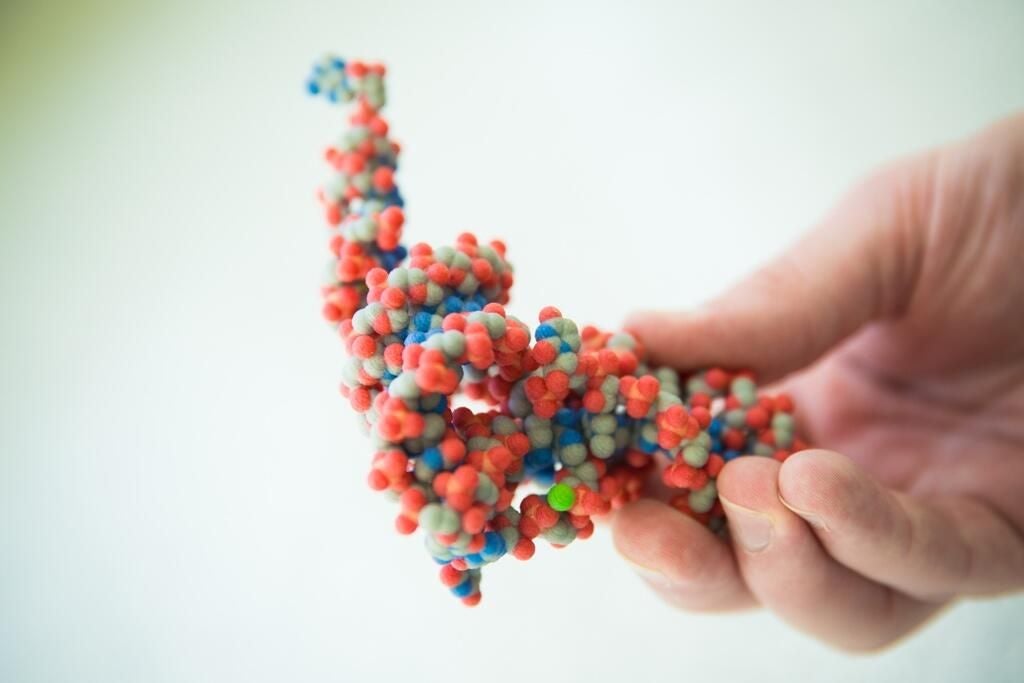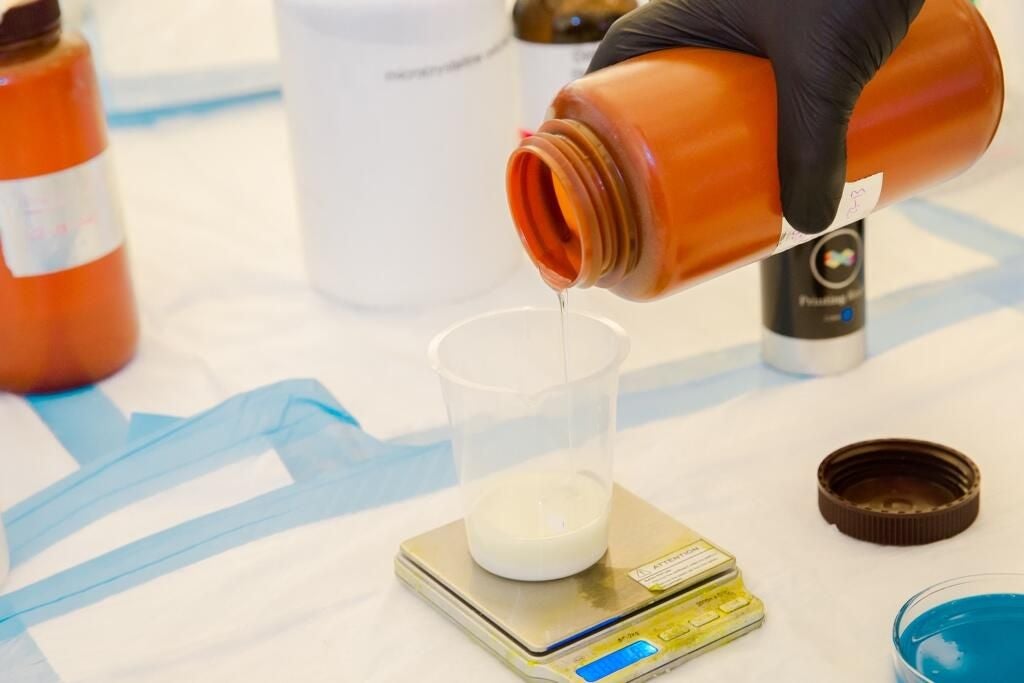Photos: Inside the MadeSolid laboratory
Image 1 of 19
A 3D printed molecules
MadeSolid CEO Lance Pickens got his start in 3D printing by printing models of specific molecules for customers.
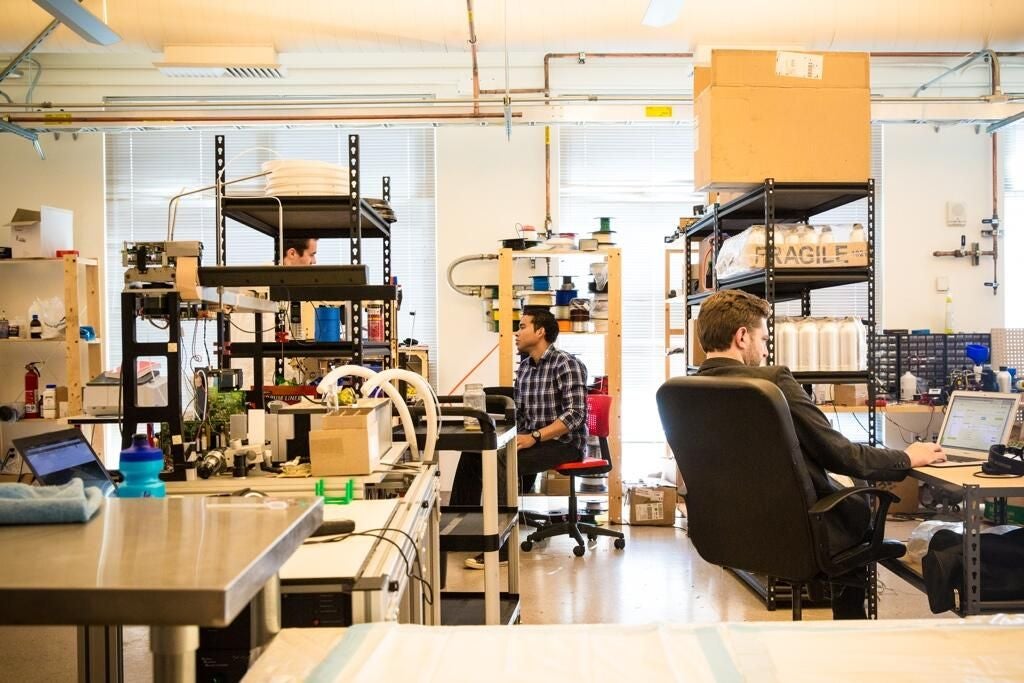

The MadeSolid laboratory
The MadeSolid laboratory
The MadeSolid lab, located in Emeryville, isn’t a typical startup office.
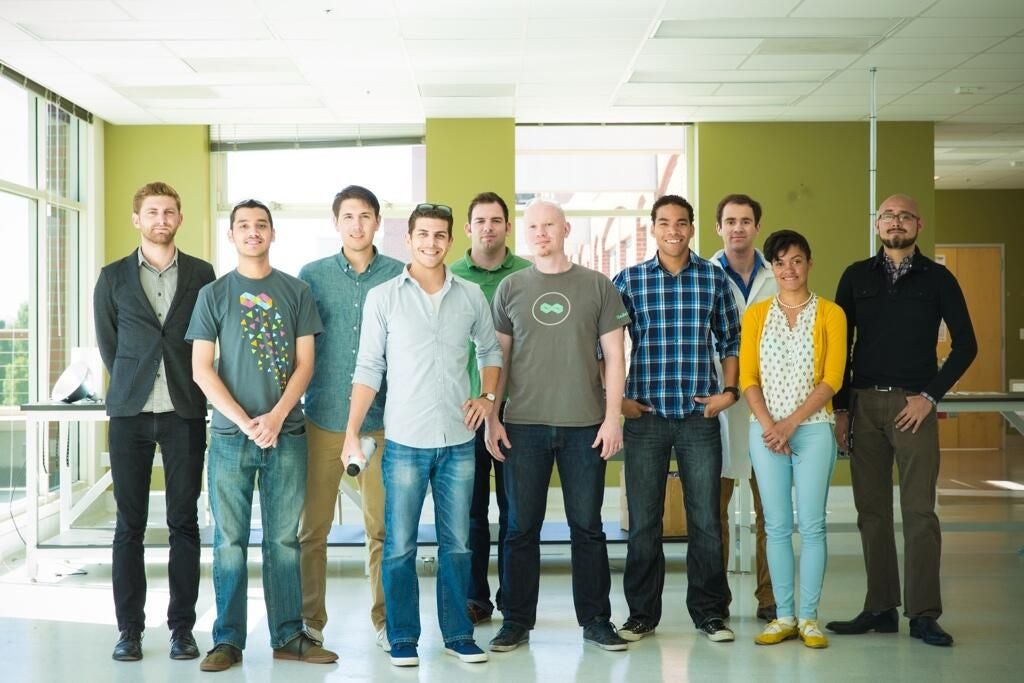

Most of the MadeSolid team
Most of the MadeSolid team
The MadeSolid team started out at a warehouse in Oakland.
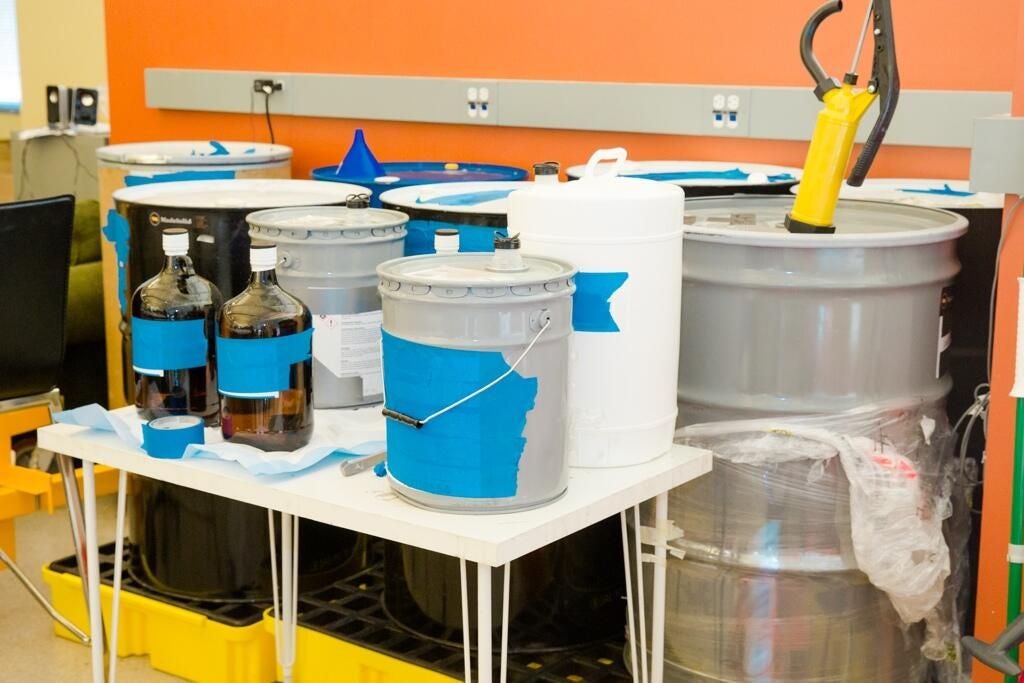

Drum of chemicals waiting to be mixed
Drum of chemicals waiting to be mixed
MadeSolid employees often have to wheel these huge drums of chemical in through the front lobby of their office building.
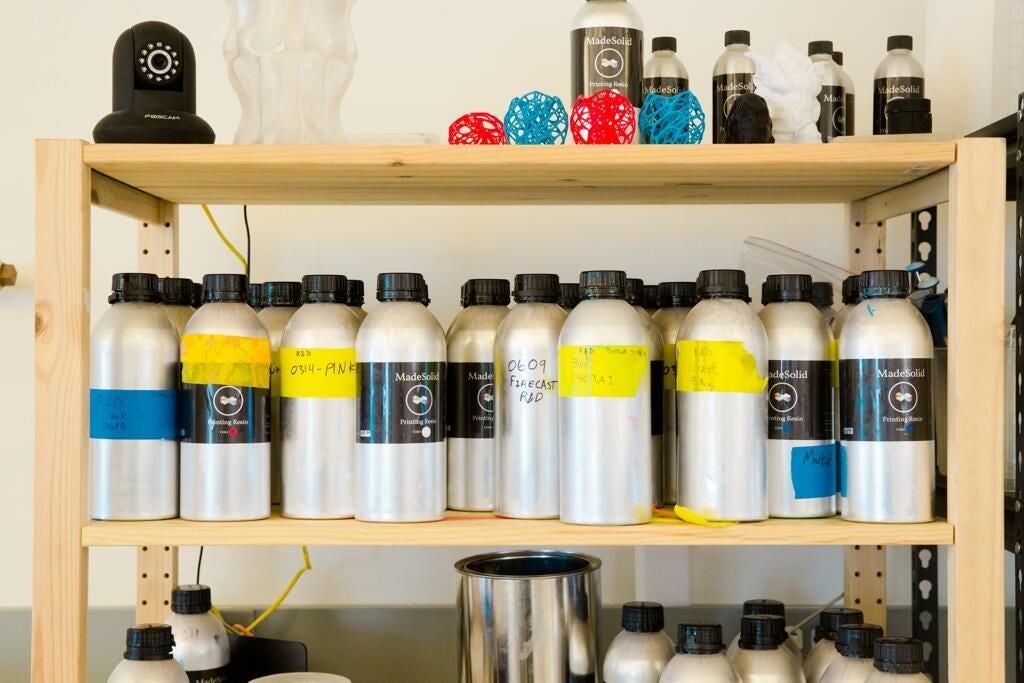

A shelf holds some of MadeSolid's resin products
A shelf holds some of MadeSolid's resin products
MadeSolid offers two types of resin for SLA style printing in a variety of colors.
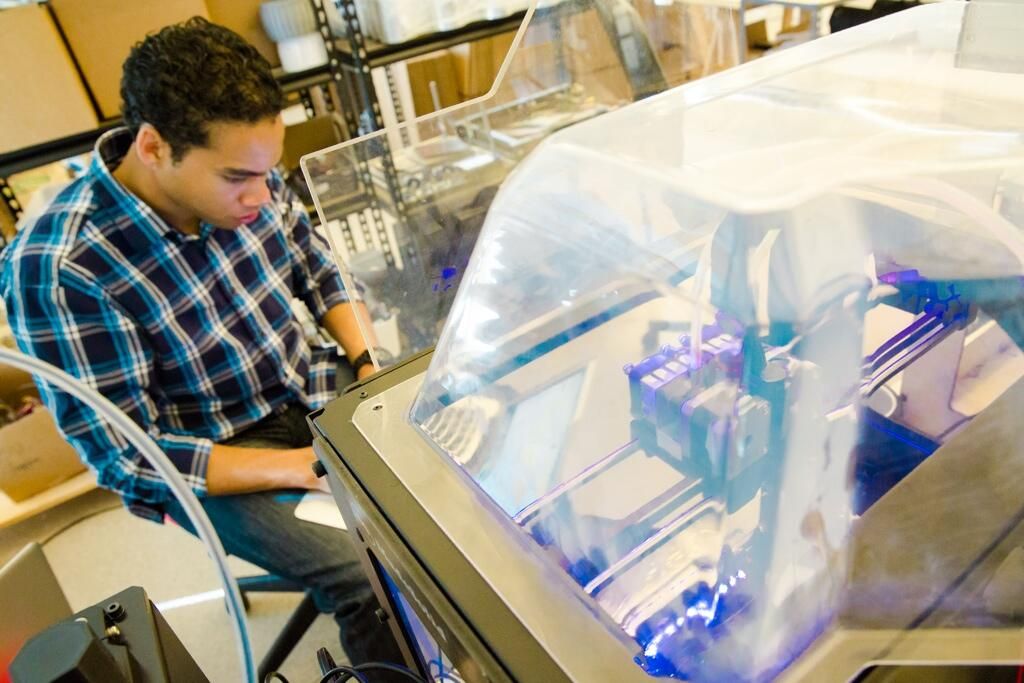

MadeSolid co-founder Brian Martinez waits for a print to finsh
MadeSolid co-founder Brian Martinez waits for a print to finsh
MadeSolid spends hours testing their materials in different 3D printers.
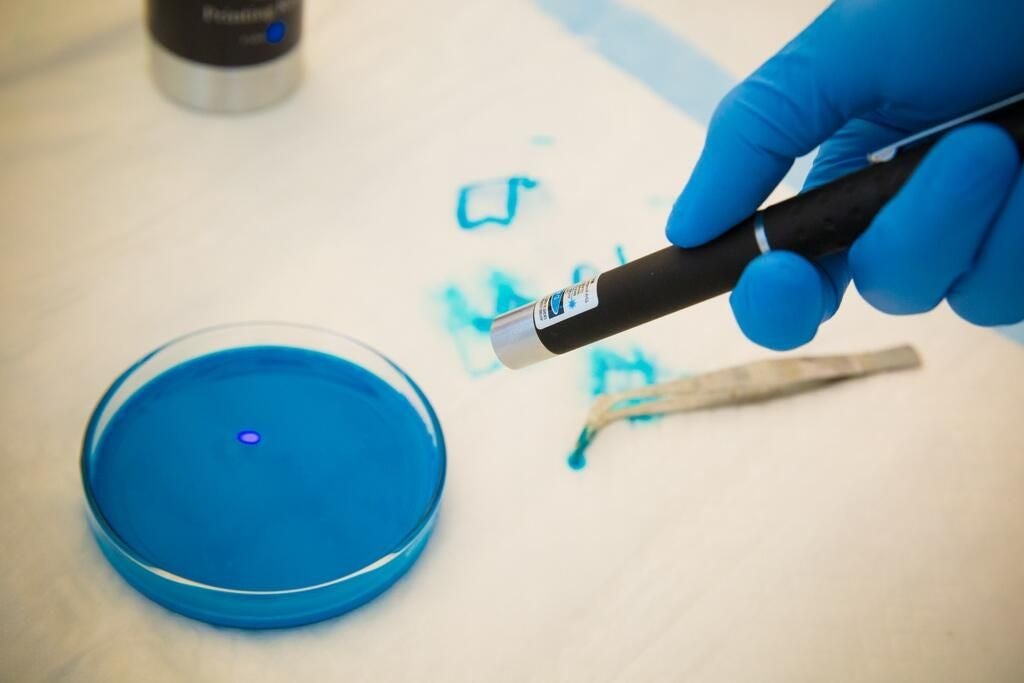

An employee uses a laser to create a 3D print with resin
An employee uses a laser to create a 3D print with resin
SLA-style 3D printing works when a laser converts resin from a liquid to a solid.
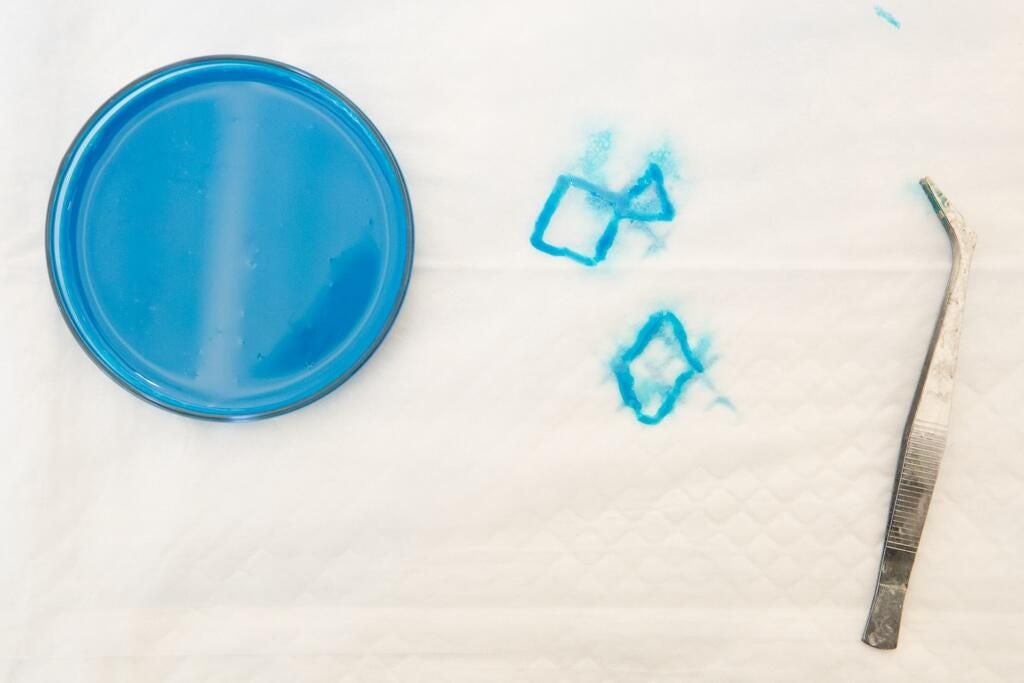

A dish of resin (left) and some completed SLA prints
A dish of resin (left) and some completed SLA prints
The finished product of SLA and SLS printing often have to be cleaned off.
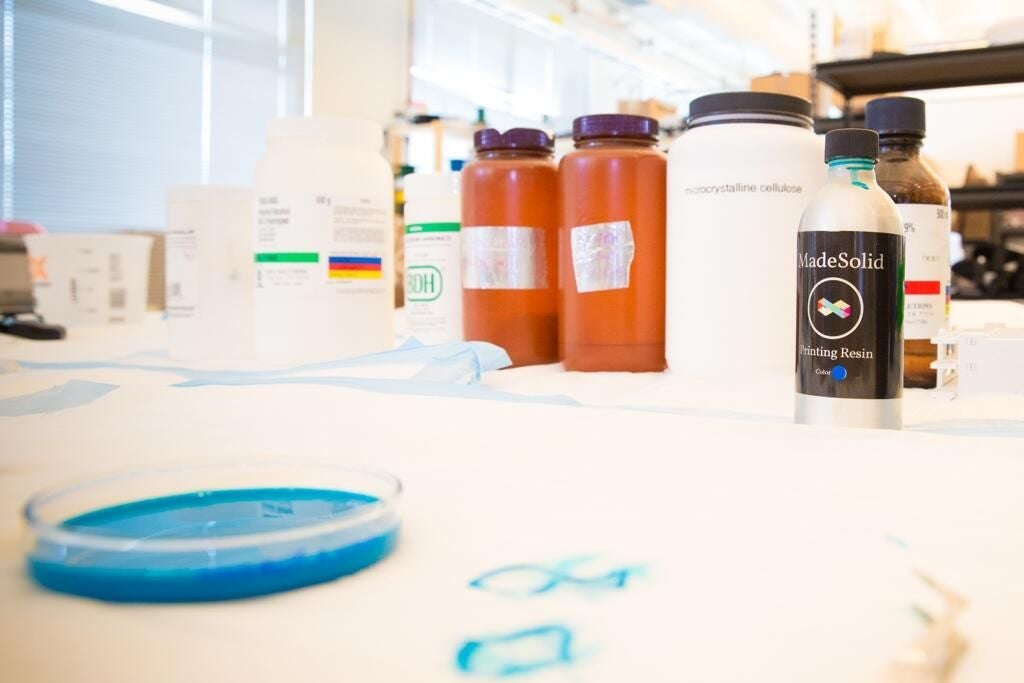

Another look at the resin and SLA prints
Another look at the resin and SLA prints
MadeSolid focuses much of their time on developing their resin products.
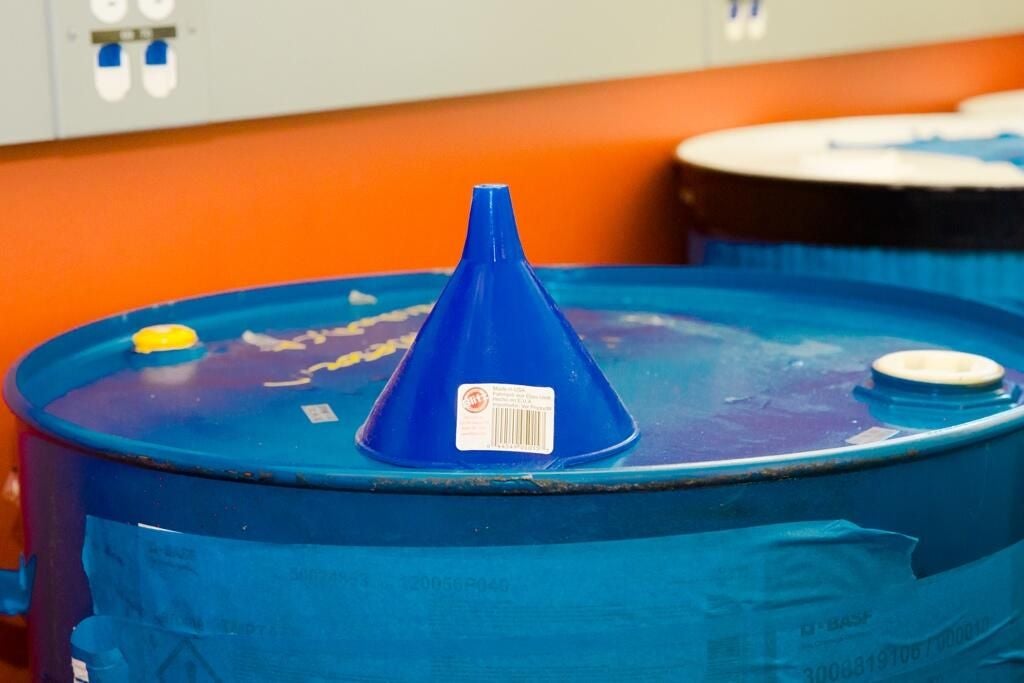

A funnel used to mix chemicals
A funnel used to mix chemicals
Funnels are often used to transfer chemical from big rums like this one into smaller vessels.
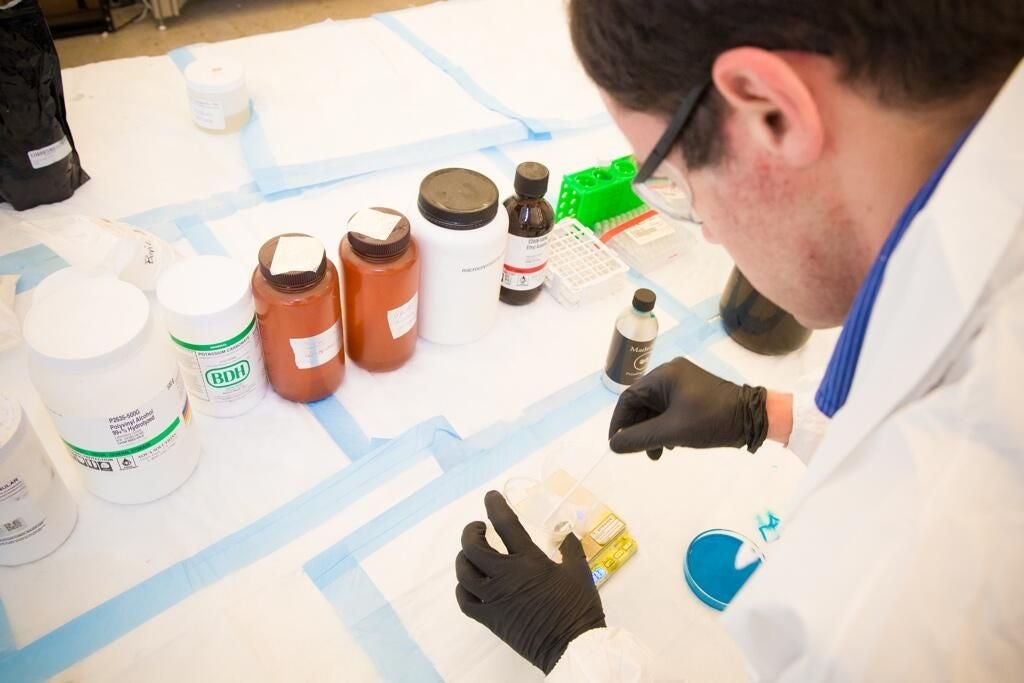

MadeSolid chemist Sam Bozek mixes chemicals
MadeSolid chemist Sam Bozek mixes chemicals
The goal of MadeSolid is to create materials that produce higher quality 3D printed products.
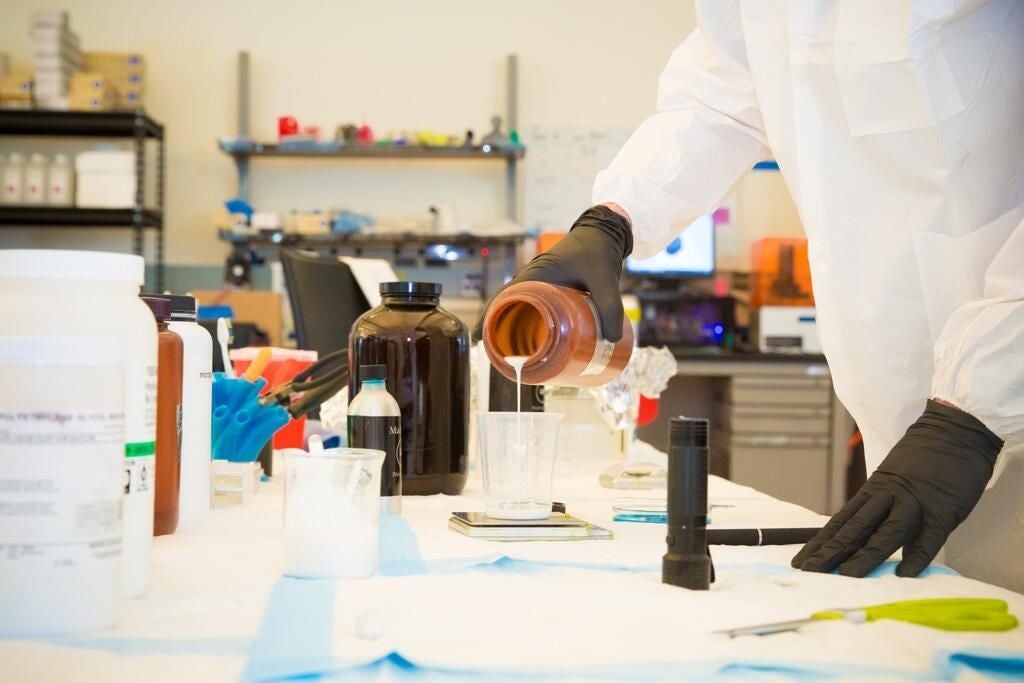

Bozek works on developing the product
Bozek works on developing the product
MadeSolids prides itself on producing a better quality product than what is currently available.
Chemicals being weighed
Part of the development process is weighing out chemicals to make sure there is the proper amount.
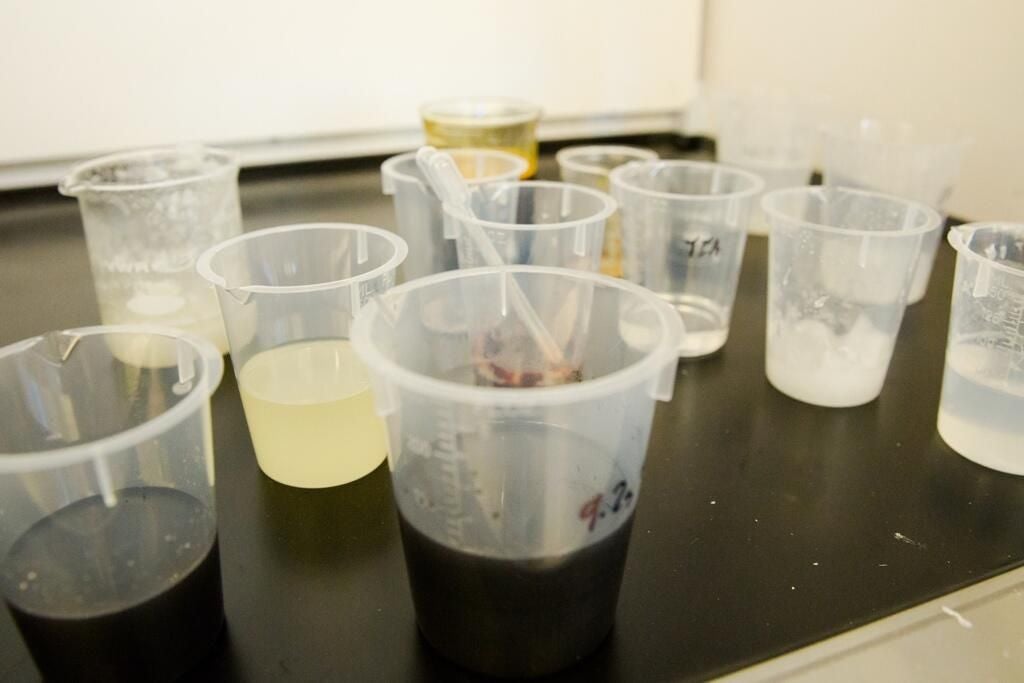

More chemicals used to develop MadeSolid products
More chemicals used to develop MadeSolid products
Ingredients such as microcrystalline cellulose are used to create stable materials for 3D printing.
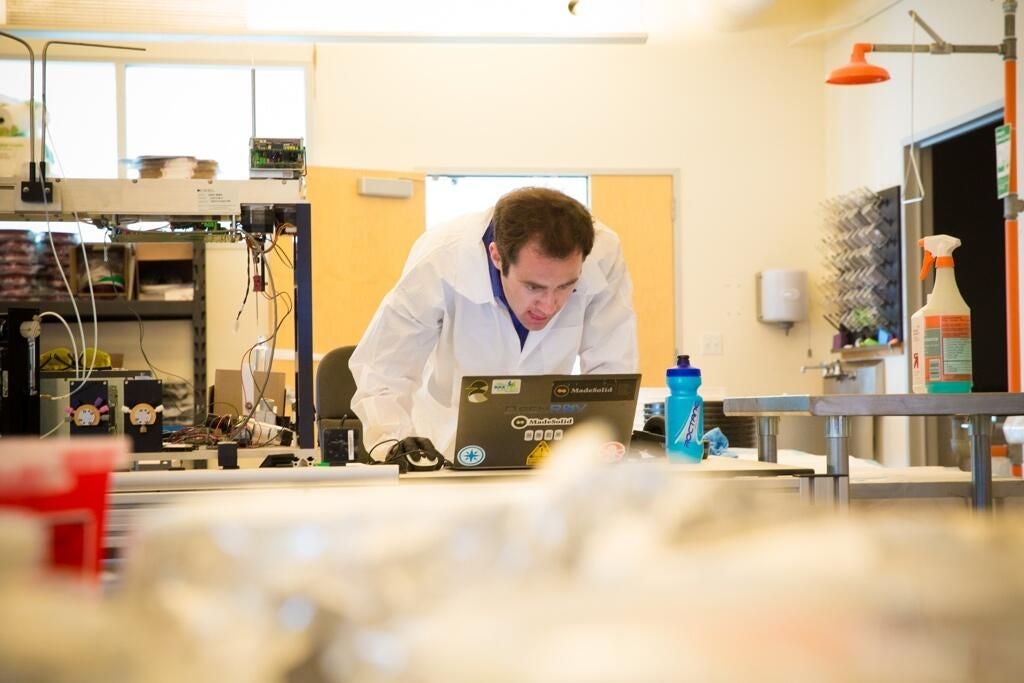

Bozek works on his computer
Bozek works on his computer
After developing chemicals, a couple hours are spent testing materials and measuring the prints in the lab.
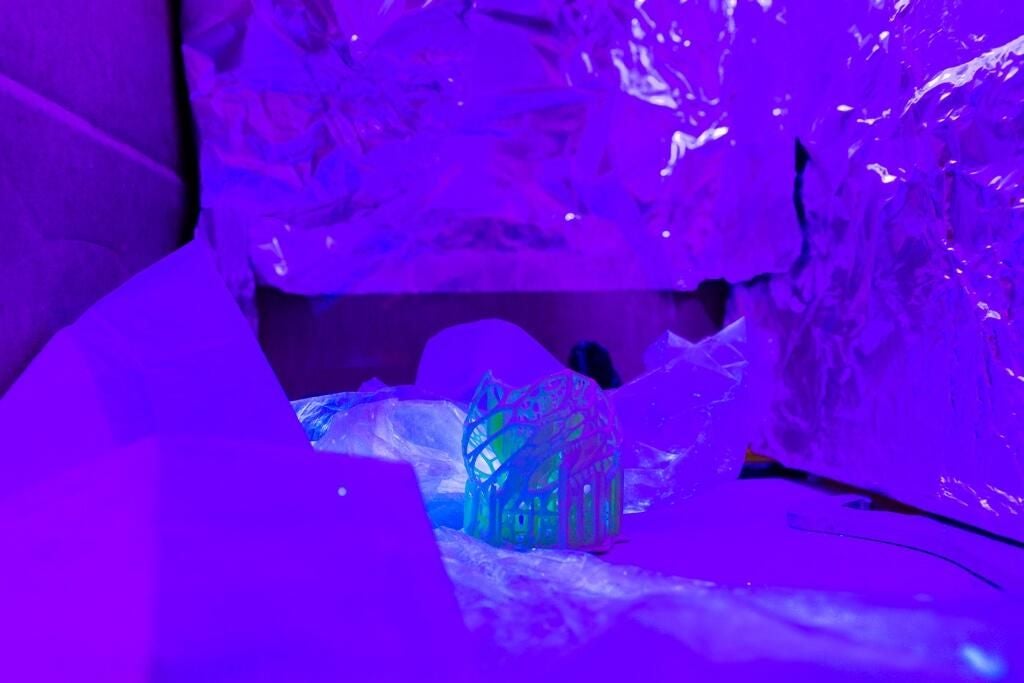

An SLA print is UV cured
An SLA print is UV cured
UV light helps to harden the prints made with resin.
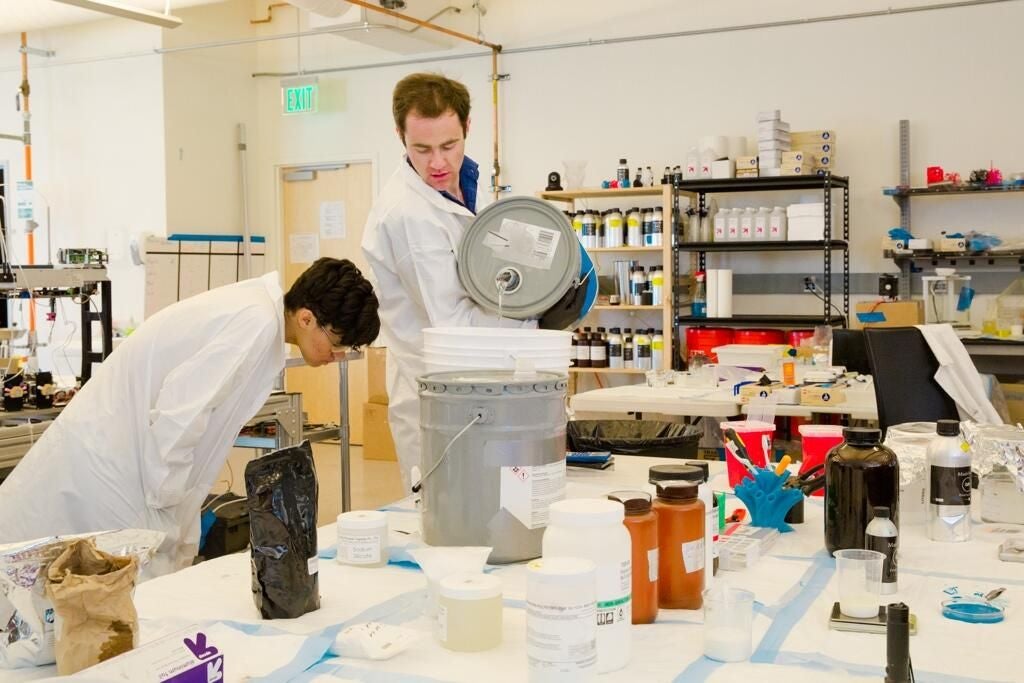

Janina Motter (left) helps Bozek measure a mixture
Janina Motter (left) helps Bozek measure a mixture
MadeSolid chemists spend six to seven hours everyday working on chemical in the lab.
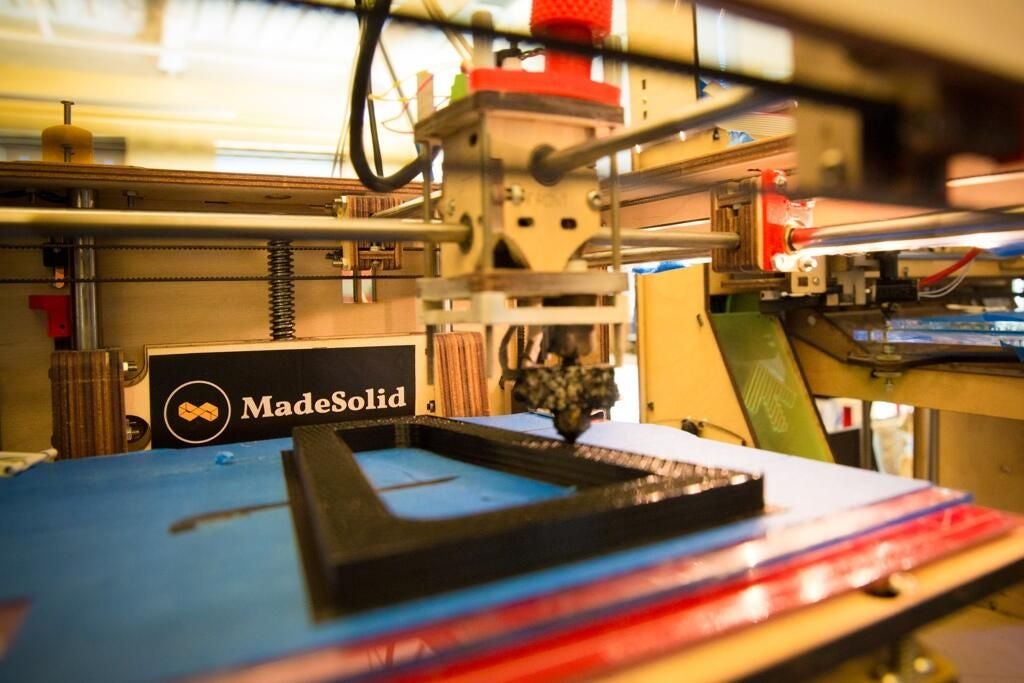

One of the 3D printers at MadeSolid
One of the 3D printers at MadeSolid
MadeSolid began as a service bureau after Lance Pickens and David Rorex.
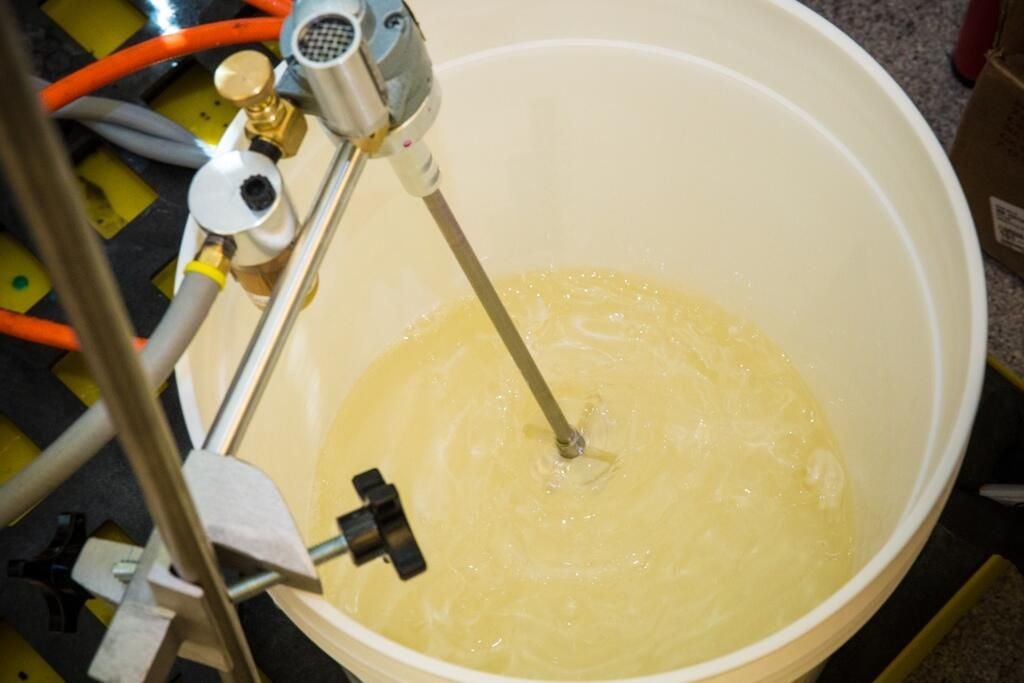

A machine helps automate the mixing process
A machine helps automate the mixing process
Pickens said that he wants to see more automation in the MadeSolid lab in the future, to help with menial tasks in developing products.
-
Account Information
Contact Conner Forrest
- |
- See all of Conner's content
